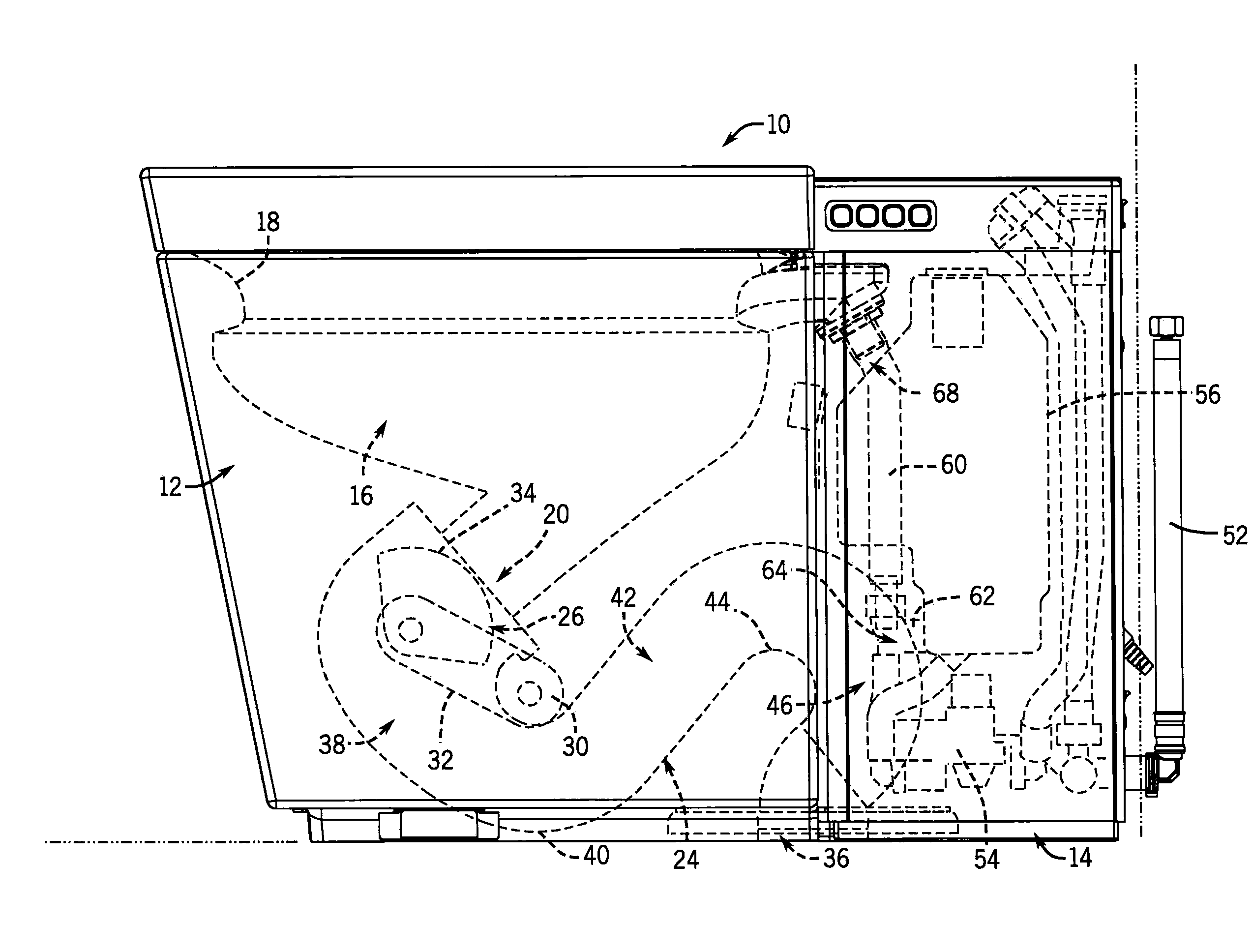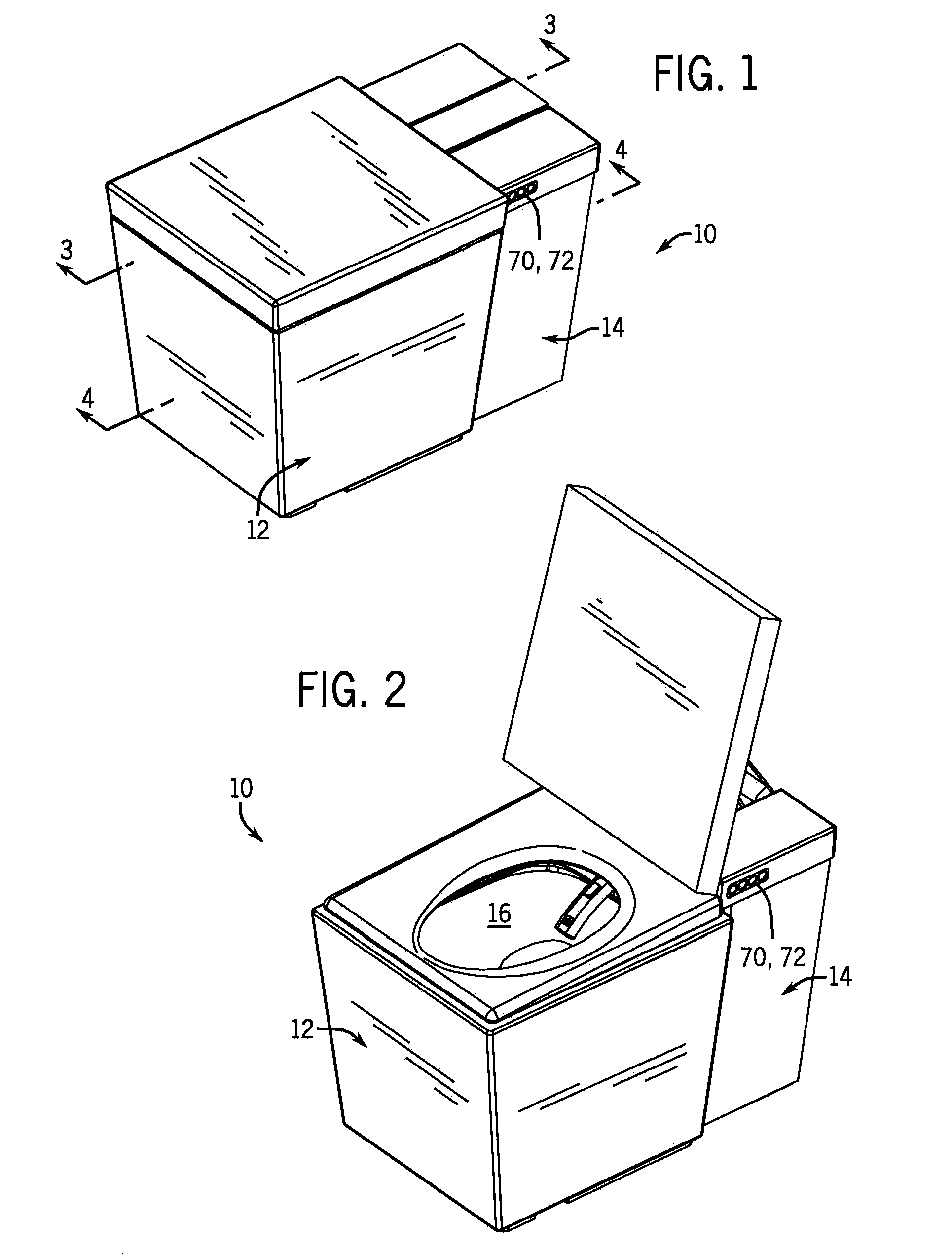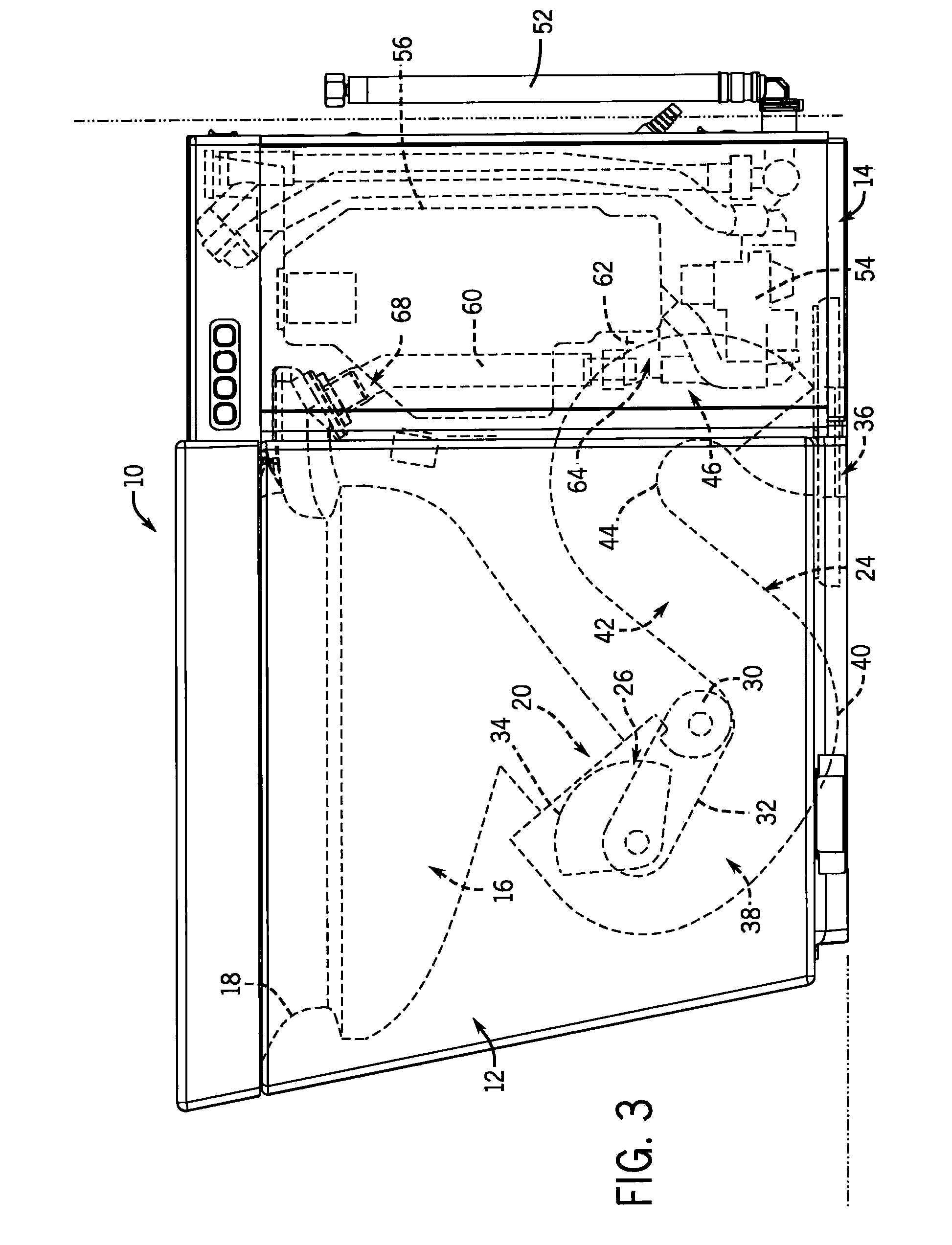Toilet flushing assembly and sequence
a technology for assembly and sequence of toilets, applied in the field of toilet flushing assembly and sequence, can solve the problems of insufficient or inconsistent rinsing of the toilet bowl in high waste conditions, waste of water consumption in low waste conditions, and insufficient flush control components and sequencing of conventional toilets to achieve efficient and adequate flushing, etc., to achieve the effect of improving flushing and saving water
- Summary
- Abstract
- Description
- Claims
- Application Information
AI Technical Summary
Benefits of technology
Problems solved by technology
Method used
Image
Examples
Embodiment Construction
[0023]Referring now to FIGS. 1-5, a toilet 10 is shown that is configured to have two flushing sequences. Although the specifics of the flushing sequences will be described in more detail below, an overview of the components of the toilet 10 and their connectivity will be described first to provide a structural context for the flushing sequences. Although a two-part modular construction is shown, it should be appreciated that the toilet 10 need not be of a modular design and could be of a more conventional toilet assembly. Accordingly, the modular assembly is only one example of a toilet that may utilize the flushing sequences described below.
[0024]As best seen in FIGS. 1 and 2, the toilet 10 includes a frontal basin portion 12 and a rear backpack portion 14. In the embodiment shown, the toilet 10 is designed to be a modular assembly in which, generally speaking, the rear backpack portion 14 supports and / or houses many of the functional components of the toilet 10 while the frontal ...
PUM
 Login to View More
Login to View More Abstract
Description
Claims
Application Information
 Login to View More
Login to View More - R&D
- Intellectual Property
- Life Sciences
- Materials
- Tech Scout
- Unparalleled Data Quality
- Higher Quality Content
- 60% Fewer Hallucinations
Browse by: Latest US Patents, China's latest patents, Technical Efficacy Thesaurus, Application Domain, Technology Topic, Popular Technical Reports.
© 2025 PatSnap. All rights reserved.Legal|Privacy policy|Modern Slavery Act Transparency Statement|Sitemap|About US| Contact US: help@patsnap.com



